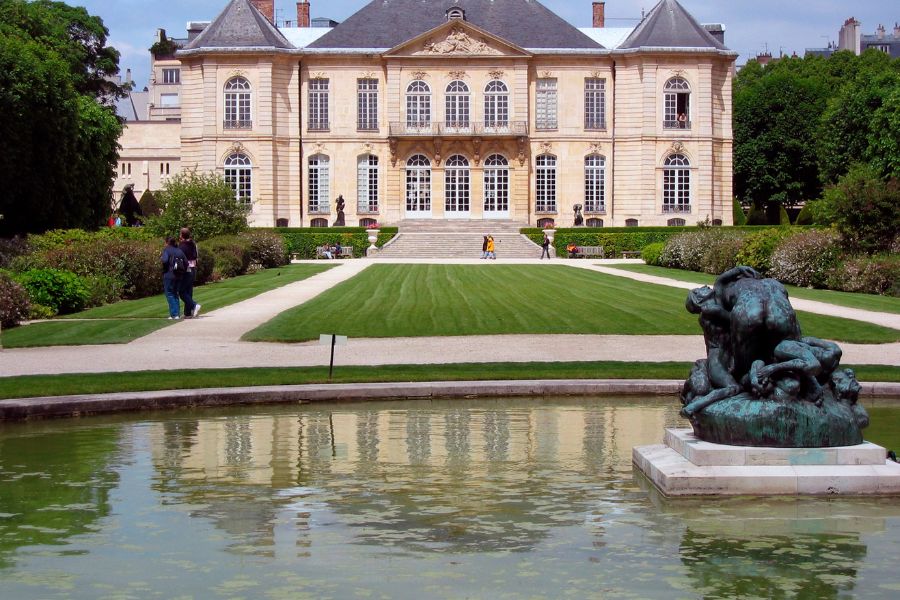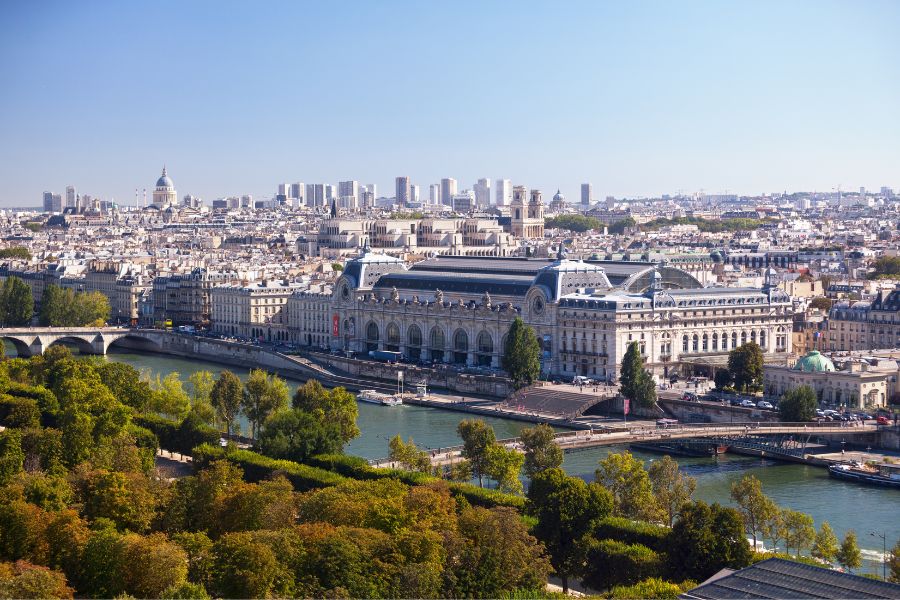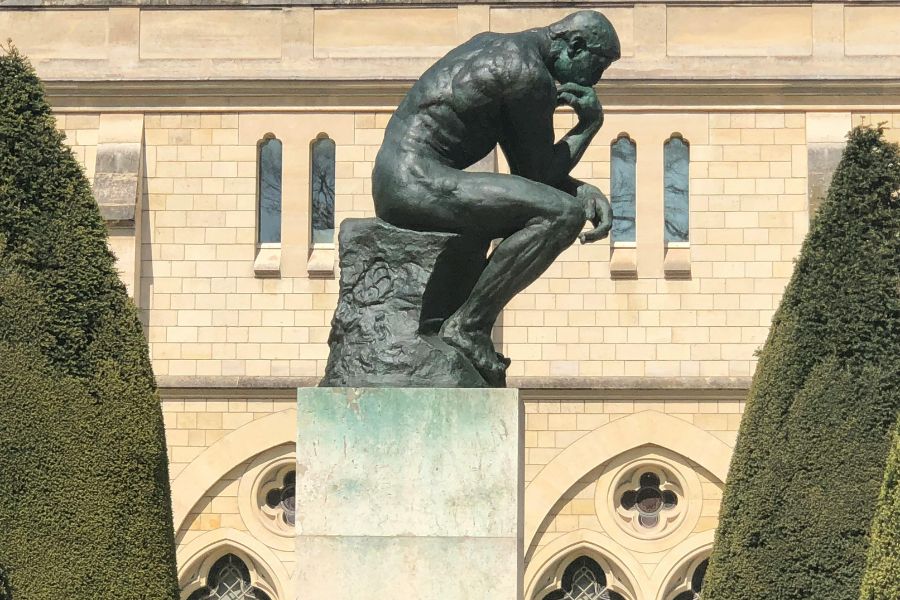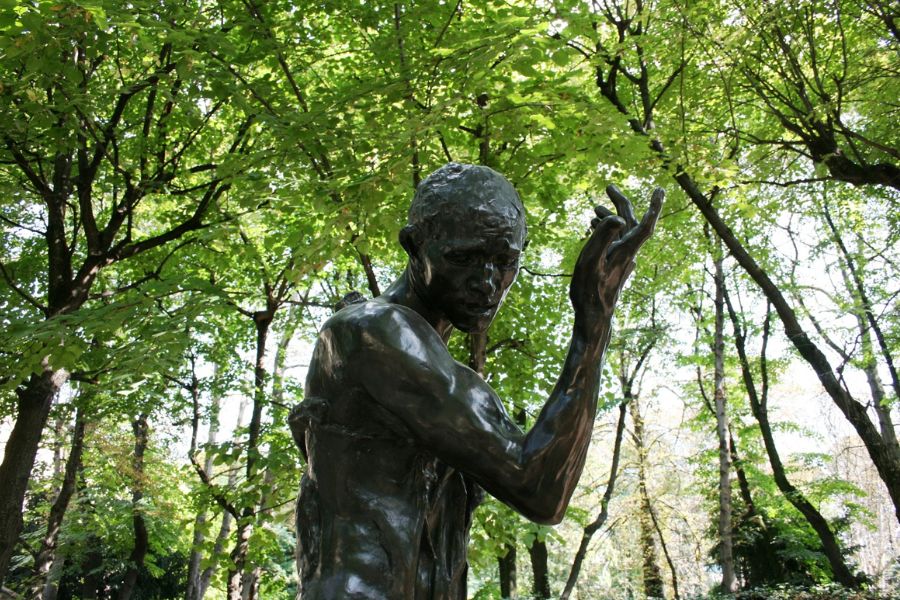I’ll never forget my first impression of the Musée Rodin’s garden. Rows of sculpted stone rise up among vibrant roses, all beneath that wide Paris sky.
As I wandered the paths, spring scents and peaceful art pulled me away from the city’s rush. A spring visit to the Musée Rodin’s garden lets you see famous sculptures surrounded by blooming roses, making this outdoor museum feel alive with color and inspiration.
For me, it wasn’t just the art—though seeing masterpieces like The Thinker outdoors is something I still think about—it was the way roses colored the air and how the neat gardens shaped every view.
Each spring, the scene shifts as different flowers bloom, from pink viburnum to fresh roses. Every visit feels a bit different, a bit new.

Anyone curious about Parisian culture will find something genuine here. This beautiful garden invites you to enjoy a slice of my Paris life—a walk between art and nature that’s both relaxing and inspiring.
Springtime Magic in the Musée Rodin’s Garden
Stepping into the garden at Musée Rodin in spring feels like you’re entering a world where art and nature quietly lift each other up. Blushing roses, timeless sculptures, and careful landscaping create a space that blends beauty and poetry in every direction.
Why Roses Bloom into Center Stage
When May comes, the Rodin garden slowly turns into a showcase of blooming roses. Soft pinks, reds, and whites spill over trellises and cluster along sun-warmed paths.
The scent of these roses mixes with a gentle breeze, and I swear it lifts my spirits right away.
The gardeners’ persistence and patience pay off in this season. They prune and nurture the roses all year, and finally, the blooms burst open as Paris shakes off its winter chill.
It’s not just the colors that dazzle me—it’s knowing every bloom comes from steady, quiet care.
A self-guided stroll along the rose beds feels almost poetic. At every turn, there’s a new surprise: tangled vines, perfectly framed views of The Thinker, or a hidden patch of blooms near The Gates of Hell sculpture.

The flowers really do become the stars of the garden, making spring a special time for anyone who visits.
The Romance Between Nature and Sculpture
One thing that keeps me coming back to the Rodin Museum is how the artwork and greenery seem to balance each other perfectly. Each sculpture looks thoughtfully placed among shrubs and flowerbeds.
Standing in front of The Burghers of Calais or The Thinker, I see roses framing the bronze figures, and yews standing like natural sentinels behind them.
This layered beauty doesn’t just happen. Many hands tend to it with thoughtful patience.
There’s a quiet poetry in this relationship. The bronze feels warmer and more human when surrounded by fragrant petals and leaves.
It’s as if nature softens Rodin’s powerful forms, inviting me to linger a little longer.
Capturing the Garden’s Atmosphere
On sunny spring afternoons, light dances through the garden, casting gentle shadows across stone paths and statues. The air carries a blend of earth, flowers, and the promise of something timeless.
The mood shifts depending on where I sit. Near the reflecting pool, sunlight sparkles on the water, and laughter drifts from families exploring the grounds.
Closer to the main building, peace settles in, almost as if the garden wants to share its own secret poetry with those who pause.
If you want to take home the feeling, I suggest a slow walk with no fixed route. Let your senses lead—watch how light falls across a sculpture or how a breeze rustles the roses.
There’s beauty and support here for anyone willing to really see it. The memories follow me home long after I leave.
Masterpieces Under Open Skies: Sculptures and Art
Walking through the Musée Rodin’s garden each spring, I’m surrounded by the seamless blend of world-famous sculpture and blooming roses. With every step, I see how art, nature, and Parisian history quietly interact under the open sky.
Rodin’s Most Beloved Works in the Garden
One of the first things I notice when I enter is The Thinker, sitting alone on a pedestal. This powerful bronze figure looks right toward Les Invalides and invites me to stop and take in both the sculpture and the scenery.
It’s easy to see why people call this one of Rodin’s greatest works.
Not far away, The Gates of Hell dominates a garden path. I get close to its dramatic doorway, packed with over 200 figures and swirling forms.
As I wander, I find The Burghers of Calais and Balzac, each telling their own emotional story.
I always take time to circle each sculpture. The sunlight and greenery change the mood at every angle.

It’s the perfect spot to see how Rodin used form and texture to express feelings—a lesson in formalism right out in the open.
Modern Art Influences and Dialogue
Rodin’s art sparks new conversations about what sculpture can be. As I walk the garden paths, I see his work alongside modern and contemporary pieces.
This dialogue between eras stands out, especially near the museum’s outdoor installations.
It’s interesting to notice how later artists responded to Rodin’s approach. Sometimes, pieces influenced by modern art traditions stand just steps away from his originals.
This setup lets me compare classical forms with newer trends in abstraction or minimalism.
For visitors, this garden offers a living timeline. I notice how ideas in art evolve, connecting Rodin’s legacy to broader movements and reminding me that even the boldest artist stands in conversation with those before and after.
Symbolism and Self-Expression in the Collection
Every statue here feels charged with meaning. Rodin loved weaving symbolism into his work, often using mythological or literary themes to say something deeper about human life.
Pieces like The Thinker or The Kiss express universal emotions—doubt, love, longing—with simple but powerful gestures.
Standing in the garden, I sense how Rodin’s art balances personal self-expression with big philosophical ideas.
The garden setting, with its changing light and fragrant blooms, makes these emotions even more vivid.
As I move from sculpture to sculpture, I notice Rodin’s technique invites me to look closer—sometimes seeing joy, sometimes pain, or sometimes just the beauty of form.

For Rodin, art and life are always deeply intertwined.
The Cultural Heart of Paris: Literature, History & More
When I stroll through the Musée Rodin’s gardens each spring, I’m not just surrounded by art and roses—I’m wandering through layers of French culture. This place connects to the legacy of French writers, poets, and thinkers, making the visit more meaningful for anyone curious about history and literature.
Connections to French Literature and Poetry
As I walk past the sculptures and blooming pathways, I often think about Victor Hugo, who inspired Auguste Rodin’s work.
Rodin’s sculpture “Monument to Victor Hugo” makes a direct connection to the literary world. Hugo, author of Les Misérables and The Hunchback of Notre-Dame, shaped French literature and influenced artists like Rodin.
Sitting on a bench under the yew trees, I remember stories of literary salons held in Paris, where writers debated ideas in French and Latin.
Writers such as Vernon Lee, an Anglo-Saxon novelist who lived in France, found inspiration in the city’s creative energy.

Even now, students bring books of poetry to read in the gardens, following in the footsteps of local authors.
The Garden’s Tie to French Intelligence and Thought
There’s a certain energy in the air, shaped by the minds who valued art, history, and philosophy. Rodin filled his notebooks with observations on modern thought—almost like an autobiography.
Standing before his works, I feel close to the long tradition of French “intelligence”—not just cleverness, but deep reflection on society.
I often see traces of France’s intellectual influence in the signs and tours, offered in both French and English.
This garden attracted artists, philosophers, and scholars, many of whom debated under these same trees.
Visiting the Musée Rodin, I can’t help but sense the reputation Paris earned for sparking new ideas, blending history, literature, and artistic vision right in the heart of the city.
Insider Tips for a Dreamy Spring Visit
Spring brings the gardens and roses of the Musée Rodin to peak beauty. New exhibitions and seasonal events add something fresh to explore.
With a little planning, I can enjoy the best of the museum and skip common hassles.
Seasonal Highlights and Not-to-Miss Spots
As soon as I step into the garden in spring, a wave of color from blooming roses greets me. Their scent blends with the fresh Paris air, creating a feeling that’s peaceful and inspiring.
I always make time to see The Thinker and The Gates of Hell, two of Rodin’s most famous sculptures set among the flowers.
The garden paths feel most inviting between March and May, with new blooms showing up almost every week.
I recommend arriving in the morning if you want to catch the golden light for photos and avoid some of the midday crowds.

Here’s what I always check off my list:
- Walk the main alleys lined with sculpted rose bushes
- Pause by the ornamental pond, which reflects the sculptures and sky
- Take in the view of Hôtel Biron’s grand facade from the center of the garden
It’s worth bringing a small notebook, too. Inspiration tends to strike as I stroll, surrounded by art and nature.
Inspiring Events and Temporary Exhibitions
Each spring, the museum unveils special exhibitions or hosts outdoor events. I check the official website in advance to see if there are new sculptures on display or workshops happening during my visit.
Some years, the museum offers guided tours that focus just on the garden’s flowers and their history, adding a fun twist to the usual experience.
I’ve even stumbled across live art demonstrations where artists sculpt or draw right in the gardens, giving a behind-the-scenes look at how new works come to life.
Temporary exhibitions in the Hôtel Biron often feature loans from other museums or pieces that aren’t always on view.
If I’m traveling with a group, I make sure to check for any age-friendly events, like kids’ sculpture classes.
Marking exhibition dates and event hours in my planner helps me avoid missing these limited-time surprises.
Overcoming Inconvenience: Practical Visiting Advice
Spring can bring crowds, rain, or sudden weather changes. To avoid inconvenience, I dress in layers and pack a small umbrella just in case.
If rain’s in the forecast, I explore the gardens first, then head indoors to see Rodin’s works when the weather shifts.
Ticket lines can get long, especially on weekends. I always buy a timed ticket online—it saves a lot of waiting.
The museum offers support services for visitors with reduced mobility, including wheelchair access to most of the garden paths.

For breaks, I treat myself to a snack at the café on-site. The outdoor seating lets me soak up the garden atmosphere a bit longer before heading back into the city.
Legacy, Inspiration, and Access
Stepping into the garden at Musée Rodin feels like entering a living chapter of art history. Rodin’s creative vision stretches well beyond his lifetime—touching artists, sparking new movements, and making art tangible for everyone.
Rodin’s Influence on Modern Movements
When I walk among the sculptures, I sense how Rodin changed the way artists see and shape the world. His expressive figures and textured surfaces opened new doors for sculptors who came after him.
Rodin’s work influenced early 20th-century art movements. At the Musée Rodin, I spot echoes of his style in pieces by those linked to Bauhaus and De Stijl.
He broke away from classical ornamentation, choosing instead to focus on the raw emotion found in form and gesture.
That choice inspired others—think of how Dada and Surrealism later championed new ways to create and imagine.
Rodin believed art should show feeling—not just look beautiful. That spirit of innovation still pulses through the garden, making it feel both historic and fresh.
Artists Who Found Inspiration Here
You can stroll through these gardens in spring and instantly see why so many artists felt inspired here. The place, with its roses and winding paths, pulled in visitors like Van Gogh and Gauguin—both of them really admired Rodin’s bold style.
This garden wasn’t just a pretty backdrop. It became a spot where people gathered. I like to picture painters such as Seurat sketching quietly in some shady corner, maybe chatting with Rodin about color, light, or just the feeling of it all.
For a lot of artists, being near Rodin opened up a fresh way of looking at everyday life. The way nature and sculpture blend here sparks a creative energy that any art lover will pick up on.
Public Domain, Copyright, and Accessibility
Rodin’s work pops up everywhere, honestly, because so much of it sits in the public domain now. Pieces like The Thinker aren’t tied up by copyright anymore, so you’ll spot them in textbooks, ebooks, and museums all over the place.
When I walk through the museum, I love how easy it is to see what’s available. Each artwork has clear labels showing whether it’s public domain or still under copyright.
That little touch really helps teachers, students, and folks working on digital projects—think AOL or open ebook sites—share Rodin’s art without worry. The museum’s staff actually go out of their way to answer copyright questions, making things feel open and approachable.

They highlight the importance of fair use and teach visitors about respecting artists’ rights. It’s a nice balance: you can explore, learn, and even take a bit of Rodin’s legacy home, all while keeping everything above board.

